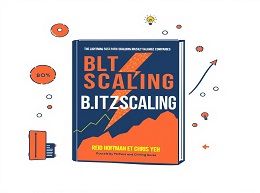Mastering the Rockefeller Habits: What You Must Do to Increase the Value of Your Growing Firm

Mastering the Rockefeller Habits: Strategies for Business Growth
"Mastering the Rockefeller Habits: What You Must Do to Increase the Value of Your Growing Firm" by Verne Harnish is a seminal work in the realm of business strategy and management. The book distills the practices that John D. Rockefeller used to build his empire and provides actionable insights for modern entrepreneurs aiming to scale their businesses effectively. This detailed review explores the core concepts, practical tools, and illustrative examples presented in the book, offering a comprehensive understanding of how to apply these principles to foster business growth.
The Core Premise: The Rockefeller Habits
The Rockefeller Habits are a set of fundamental business practices that drive sustainable growth. Harnish emphasizes that consistent execution of these habits is critical for any organization aiming to increase its value and scale efficiently.
The Three Pillars of Rockefeller Habits
1. Priorities: Establishing and maintaining clear priorities.
2. Data: Ensuring timely and accurate data to drive decisions.
3. Rhythm: Implementing a regular meeting rhythm to maintain alignment and accountability.
Priorities: Setting Clear and Achievable Goals
Harnish argues that clear priorities are essential for guiding an organization’s focus and efforts. This involves setting long-term and short-term goals that are aligned with the company's vision and strategic objectives.
Establishing a One-Page Strategic Plan
The one-page strategic plan (OPSP) is a central tool in "Mastering the Rockefeller Habits." It helps distill the company's vision, values, objectives, and action plans into a concise format that is easy to communicate and follow.
Example: An emerging tech company might use the OPSP to outline its vision of becoming a market leader in AI solutions, with clear annual objectives like expanding product offerings, increasing market share, and enhancing customer satisfaction.
Big Hairy Audacious Goals (BHAGs)
Inspired by Jim Collins, BHAGs are long-term, ambitious goals that energize and motivate the organization. Harnish emphasizes the importance of having a BHAG that aligns with the company’s core values and strategic vision.
Example: SpaceX’s BHAG of enabling human life on Mars serves as a powerful motivator for its employees, driving innovation and long-term commitment to their mission.
Data: Leveraging Information for Decision Making
Timely and accurate data is crucial for informed decision-making. Harnish highlights the importance of having key performance indicators (KPIs) that provide insights into the company’s performance and progress towards its goals.
Identifying Key Metrics
Every business should identify key metrics that are most indicative of its health and progress. These metrics should be regularly reviewed to ensure that the company is on track to meet its strategic objectives.
Example: For a SaaS company, key metrics might include monthly recurring revenue (MRR), customer acquisition cost (CAC), customer lifetime value (CLV), and churn rate.
Implementing Dashboards
Dashboards are effective tools for visualizing and tracking key metrics. They provide a real-time overview of the company’s performance and help managers make data-driven decisions.
Example: A retail chain might use a dashboard to monitor sales data, inventory levels, and customer satisfaction scores across different locations, allowing them to quickly identify and address any issues.
Rhythm: Establishing a Regular Meeting Cadence
Regular meetings are essential for maintaining alignment, accountability, and communication within an organization. Harnish advocates for a structured meeting rhythm to keep the team focused and coordinated.
The Daily Huddle
The daily huddle is a brief, stand-up meeting where team members share updates, discuss any roadblocks, and align their efforts for the day. This meeting should be quick, usually lasting no more than 15 minutes.
Example: A software development team might use daily huddles to review progress on tasks, highlight any blockers, and ensure that everyone is aligned on priorities for the day.
Weekly and Monthly Meetings
In addition to daily huddles, weekly and monthly meetings provide opportunities for more in-depth discussions on progress, challenges, and strategic initiatives. These meetings should focus on reviewing performance data, solving problems, and planning for the future.
Example: A marketing team might hold weekly meetings to review campaign performance, discuss new ideas, and plan upcoming initiatives, while monthly meetings might focus on broader strategic planning and goal setting.
Execution: Turning Strategy into Action
Effective execution is the cornerstone of business success. Harnish emphasizes the importance of disciplined execution, where strategies and plans are translated into actionable tasks and consistently followed through.
Accountability and Ownership
Clear accountability and ownership are critical for ensuring that tasks are completed and goals are met. Each team member should know their responsibilities and be held accountable for their performance.
Example: In a sales team, each salesperson might be accountable for meeting specific sales targets, with regular performance reviews to track progress and address any issues.
Continuous Improvement
Continuous improvement involves regularly reviewing and refining processes to enhance efficiency and effectiveness. This requires a culture of feedback and a willingness to adapt and innovate.
Example: A manufacturing company might implement lean principles to continuously improve its production processes, reducing waste and increasing efficiency.
Case Studies: Real-World Applications of Rockefeller Habits
To illustrate the practical application of Rockefeller Habits, Harnish includes numerous case studies from various industries. These case studies provide concrete examples of how businesses have successfully implemented these principles to drive growth and increase value.
Case Study: Rackspace
Rackspace, a leading managed cloud company, used the Rockefeller Habits to scale its operations and enhance customer satisfaction. By focusing on clear priorities, leveraging data for decision-making, and maintaining a regular meeting rhythm, Rackspace was able to grow rapidly while maintaining high service standards.
Example: Rackspace’s focus on customer feedback and continuous improvement helped it achieve industry-leading customer satisfaction scores, which in turn fueled its growth and market leadership.
Case Study: Southwest Airlines
Southwest Airlines applied the principles of Rockefeller Habits to streamline its operations and enhance customer experience. By setting clear priorities, such as on-time performance and low-cost operations, and maintaining a strong focus on data and execution, Southwest was able to differentiate itself in the competitive airline industry.
Example: Southwest’s disciplined execution and focus on operational efficiency have allowed it to consistently achieve profitability and customer satisfaction, even in a challenging market.
Practical Tools for Implementing Rockefeller Habits
The book provides a range of practical tools and frameworks to help businesses implement the Rockefeller Habits effectively. These tools are designed to be accessible and actionable, enabling businesses to apply them immediately.
One-Page Strategic Plan (OPSP)
The OPSP helps businesses distill their strategic vision, objectives, and action plans into a concise format. This tool is crucial for maintaining focus and alignment across the organization.
Example: A startup might use the OPSP to outline its mission, key objectives for the year, and specific actions each department will take to achieve these goals, ensuring everyone is aligned and working towards the same vision.
Meeting Rhythms and Agendas
Structured meeting rhythms and agendas help maintain focus and ensure that meetings are productive and actionable. The book provides templates and guidelines for daily huddles, weekly meetings, and monthly reviews.
Example: A project team might use a standardized agenda for their weekly meetings, including sections for reviewing progress, addressing challenges, and planning next steps, ensuring that the meetings are efficient and focused.
Driving Growth with Rockefeller Habits
"Mastering the Rockefeller Habits: What You Must Do to Increase the Value of Your Growing Firm" by Verne Harnish is an essential guide for any business looking to scale effectively and sustainably. By adopting the principles of Rockefeller Habits priorities, data, and rhythm businesses can enhance their focus, improve decision-making, and drive disciplined execution.
Whether you are a startup or an established company, this book provides practical guidance and real-world examples that can help you navigate the complexities of business growth. By applying the lessons from "Mastering the Rockefeller Habits," you can build a high-performing organization that is well-positioned for long-term success.













